Chili - The Spice of Life
Chili, a beloved spice used worldwide, is a versatile ingredient that adds depth, flavor, and heat to any dish. Known for its rich, spicy kick, chili peppers come in various forms, including fresh, dried, powdered, and as chili sauce or oil. Whether you're an adventurous cook or someone who enjoys adding a touch of heat to your meals, chili products offer the perfect solution.
Fresh Chili Peppers are vibrant, juicy, and packed with heat. From mild to extremely spicy varieties, fresh chilies can be sliced, diced, or used whole to infuse dishes with their pungent aroma. Great for stir-fries, salsas, and curries, fresh chilies add a fresh and bold flavor to your meals.
Dried Chili Peppers are perfect for slow-cooking and flavor extraction. When dried, chilies intensify their heat and smokiness. You can use them whole, ground into chili powder, or rehydrate them to create sauces and soups with a complex depth of flavor.
Chili Powder is a staple in kitchens around the world. A blend of dried chili peppers and other spices like cumin and garlic, chili powder adds a punch of heat and a savory aroma to dishes. Perfect for seasoning meats, soups, stews, and even grilled vegetables, chili powder offers convenience without compromising on flavor.
Chili Sauces and Oils are excellent for those who prefer a ready-to-use option. These products combine chili with ingredients like garlic, vinegar, or sesame oil to create flavorful sauces and oils that elevate your dishes instantly. Whether you like it sweet, tangy, or fiery, chili sauces and oils are perfect for dipping, marinating, or adding to your favorite foods.
Enhance your culinary creations with chili – a bold, flavorful ingredient that brings spice and excitement to every meal!
-
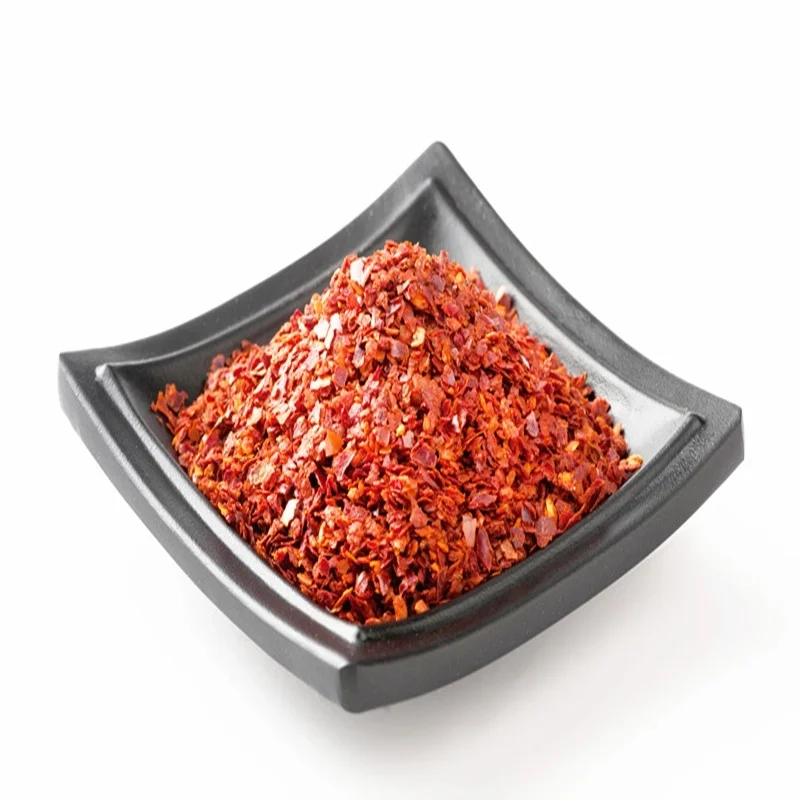
ʻO Gochugaru
2000-6000SHUHe 100% maoli kēia gochugaru me ka ʻole o nā mea hoʻohui, kūpono kā mākou huahana no ka pickling, ʻoi aku hoʻi i nā ʻano kimchi kaulana Korea. Ua hilinaʻi ʻia e nā ʻano kimchi Korea he nui, ʻo kā mākou gochugaru e hōʻoia i ka ʻoiaʻiʻo a hoʻomaikaʻi i nā ʻono kuʻuna. E hoʻokiʻekiʻe i kāu ʻike pickling me kā mākou Gochugaru maikaʻi loa - ke koho maʻemaʻe no ka poʻe e ʻimi nei i ka maikaʻi ʻole i ka hana ʻana i nā kīʻaha ʻono a me ka ʻoiaʻiʻo Korea. E ʻimi i ke ʻano o ka moʻomeheu kuʻuna Korea me kā mākou gochugaru ʻokoʻa, kahi e hui ai ka maʻemaʻe i ka hoʻoilina waiwai o ka pickling excellence.
-
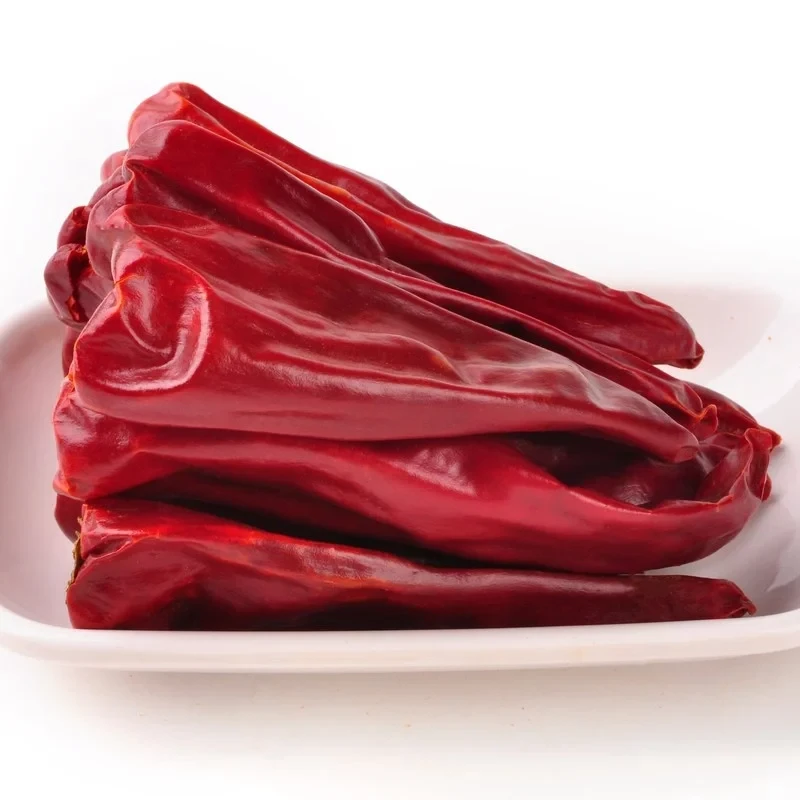
ʻO Yidu Chili maloʻo
3000-5000SHUʻO kēia chili Yidu maloʻo i koho lima ʻia a maloʻo i ka lā, e mālama ana i ko lākou mau ʻano kūlohelohe a me nā ʻano hana kuʻuna, e loaʻa ana i kahi mea kanu meaʻai. He 100% kūlohelohe ia me ka ʻole o nā mea hoʻohui, e hōʻike ana i kahi kala ʻulaʻula ʻulaʻula, ʻono kūʻokoʻa, ʻono mau, a me ka maikaʻi maikaʻi. Hoʻohana ia ma ke ʻano he mea hoʻolaʻa olakino olakino, e ʻae i nā mea kūʻai aku e hoʻoponopono i ke kiʻekiʻe o ka spiciness i kā lākou mau kīʻaha e like me nā makemake pilikino. ʻO nā hiʻohiʻona kūʻokoʻa o kā mākou chili Yidu maloʻo e lilo ia i koho maʻalahi a hoihoi no ka poʻe leʻaleʻa culinary.
-
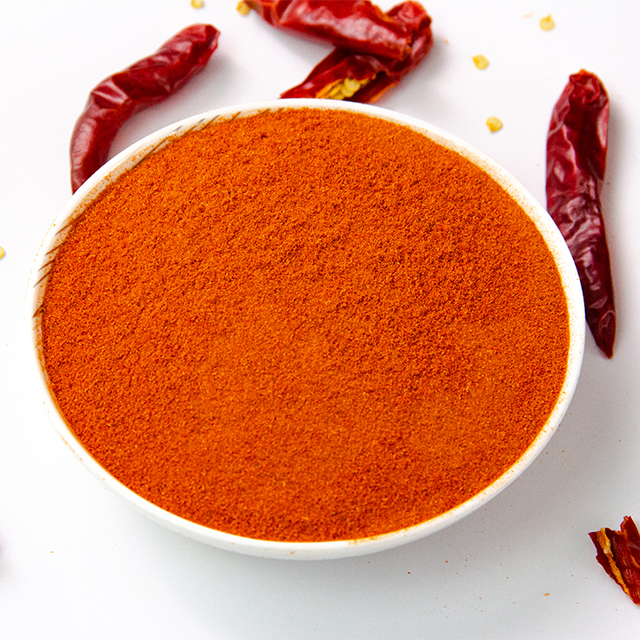
ʻO ka pauka chili-10,000-15,000SHU
10,000-1,5000SHUʻO kēia pauka chili he mea ʻala maikaʻi loa e hoʻohui i kahi ʻono a me ka wela i nā ʻano kīʻaha like ʻole. Hoʻokumuʻia mai nā pepa chili maikaʻi loa, ua hanaʻia kā mākou huahana me ka pololei e kūpono i nā kūlana kiʻekiʻe o ka maikaʻi a me kaʻono.
-
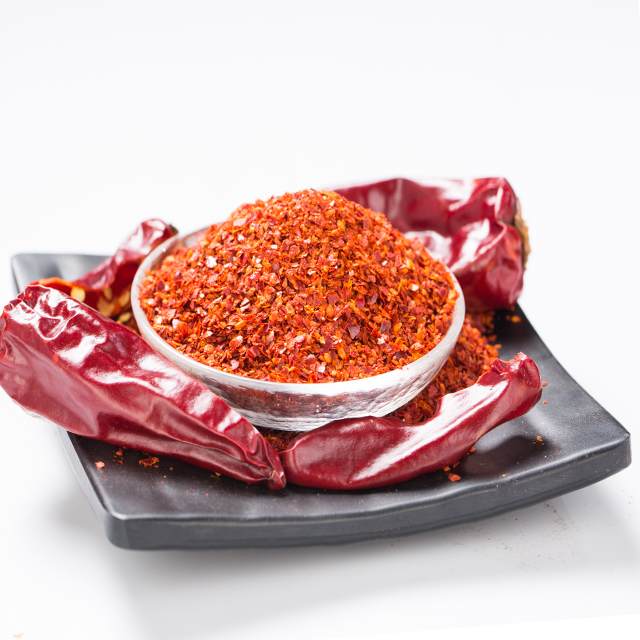
ʻO ka paprika momona i ʻoki ʻia
ʻAʻole laʻaHe 100% maʻemaʻe kēia paprika ʻoluʻolu, ʻaʻohe kiko, ʻeleʻele, a me Sudan Red. ʻO kā mākou huahana e hōʻoiaʻiʻo i ka maʻemaʻe a me ka maikaʻi, e hōʻoiaʻiʻo ana i kahi hoʻohui ʻono i kāu mau kīʻaha. Me nā kīnā ʻole a me ka mana koʻikoʻi koʻikoʻi, kū ia ma ke ʻano he koho hilinaʻi no ka poʻe hoihoi culinary. E hoʻokiʻekiʻe i kāu mau mea ʻai me kā mākou paprika momona maikaʻi i ʻoki ʻia, e hāʻawi ana i ka maikaʻi like ʻole a me ka hoʻohui ʻana a me ke kīnā ʻole i kāu mau punahele punahele. E hilinaʻi i ka maʻemaʻe o kā mākou huahana no kahi ʻike meaʻai maikaʻi a leʻaleʻa.
-
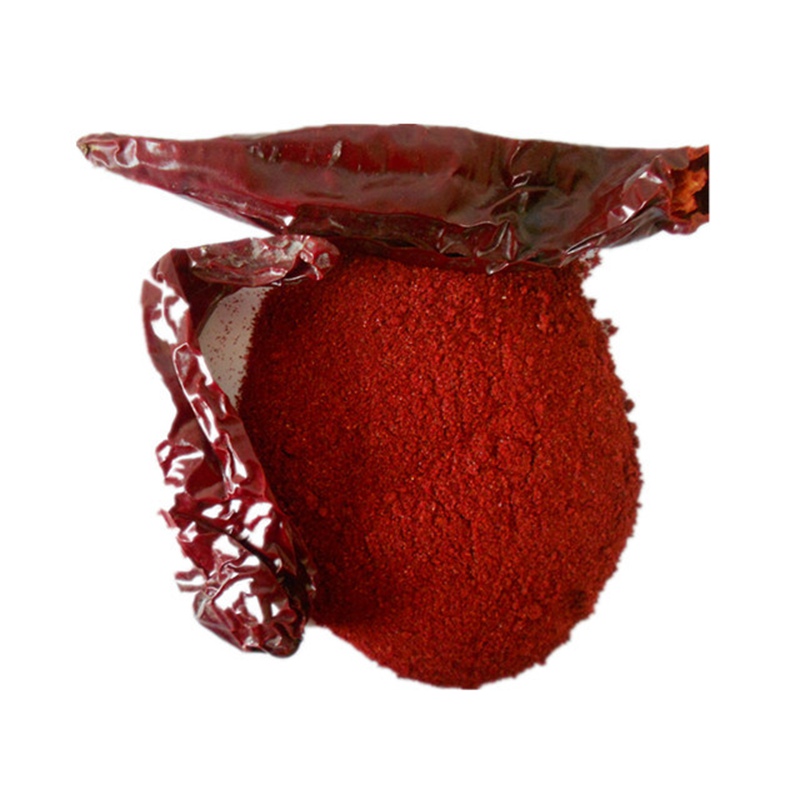
ʻO ka pauka paprika momona
ʻAʻole laʻaʻO kēia pauka paprika momona he 100% maoli me ka ʻole o nā mea hoʻohui, e hōʻike ana i kahi kala ʻulaʻula ʻulaʻula, ʻono kūʻokoʻa a me ka maikaʻi maikaʻi. He mea ʻala ʻole ia e hiki ke hoʻohana ʻia e hoʻomaikaʻi i ke kala o nā kīʻaha, e ʻoluʻolu i ka nānā. ʻO nā hiʻohiʻona kūʻokoʻa o kā mākou pauka paprika momona e lilo ia i koho maʻalahi a hoihoi no ka poʻe leʻaleʻa culinary.
Hāʻawi kā mākou pauka paprika momona i nā koho maʻamau no nā kala like ʻole, a me ka ʻeke. paʻa mākou i ka hoʻokō ʻana i nā pono hoʻoponopono like ʻole.
-
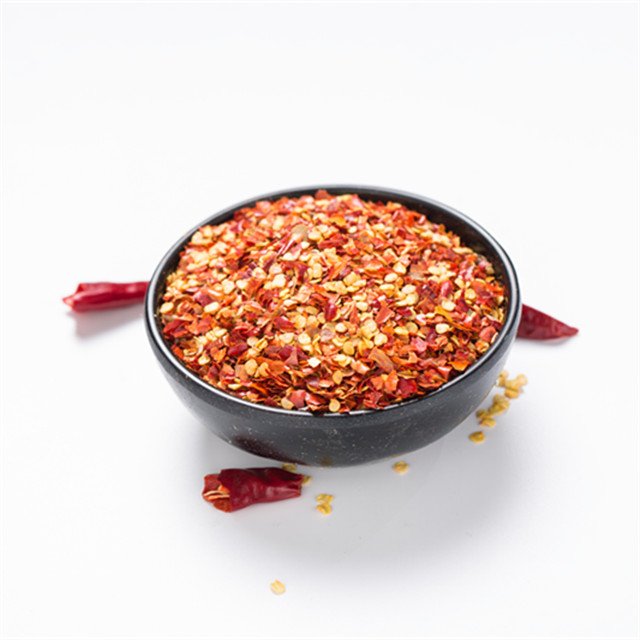
paʻipaʻi-40,000-50,000SHU
40,000-50,000SHUʻO kā mākou hale hana he hub o nā mea ʻala hou, e hāʻawi ana i nā ʻano huahana like ʻole, me ka pepa ʻulaʻula i ʻoki ʻia, ka pauka chili, ka chili maloʻo, nā ʻāpana chili, a me ka ʻaila chili. Hāʻawi kā mākou laina huahana nui i nā pono meaʻai like ʻole, mai ka hoʻohui ʻana i kahi kīʻaha ahi i nā pizzas a me nā pastas a hiki i ka hoʻokomo ʻana i nā ʻono momona i loko o nā stews a me nā sopa. Ua loaʻa i kēlā me kēia huahana i kā mākou hōʻiliʻili ka palapala hōʻoia EU hanohano, e hōʻike ana i kā mākou kūpaʻa kūpaʻa ʻole i ka maikaʻi. E hoʻokiʻekiʻe i kāu hana kuʻina me kā mākou mea ʻala maikaʻi, i hana ʻia no ka versatility a me ka ʻoiaʻiʻo, e hōʻoiaʻiʻo ana i kahi ʻike leʻaleʻa a me ka ʻono i kēlā me kēia ʻano kīhini.
-
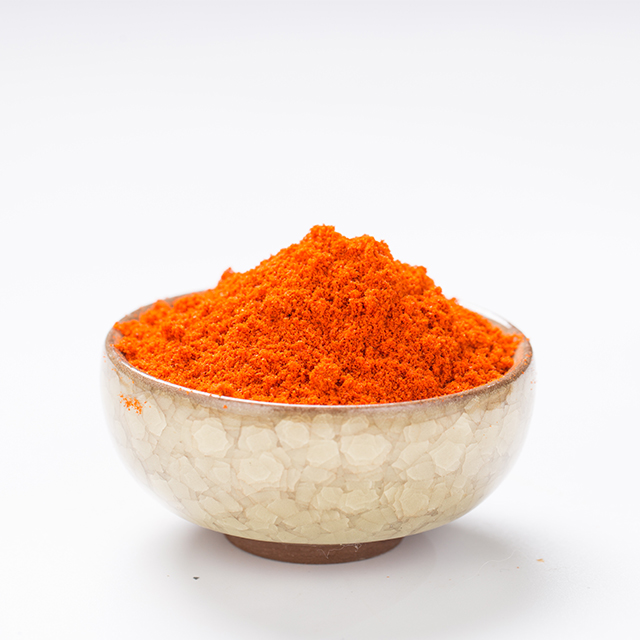
pauda chili-600,000SHU
60,0000SHUʻO kēia pauka chili he 100% maoli me ka ʻole o nā mea hoʻohui, e hōʻike ana i kahi kala ʻulaʻula ʻulaʻula, ʻono kūʻokoʻa, ʻono like ʻole, a me ka maikaʻi maikaʻi. Hoʻohana ia ma ke ʻano he mea hoʻolaʻa olakino olakino, e ʻae i nā mea kūʻai aku e hoʻoponopono i ke kiʻekiʻe o ka spiciness i kā lākou mau kīʻaha e like me nā makemake pilikino. ʻO nā hiʻohiʻona kūʻokoʻa o kā mākou pauka chili e lilo ia i koho maʻalahi a hoihoi no ka poʻe leʻaleʻa culinary.
Hāʻawi kā mākou pauka chili i nā koho maʻamau no nā pae spiciness like ʻole, nā kala, a me ka ʻeke. paʻa mākou i ka hoʻokō ʻana i nā pono hoʻoponopono like ʻole.
-
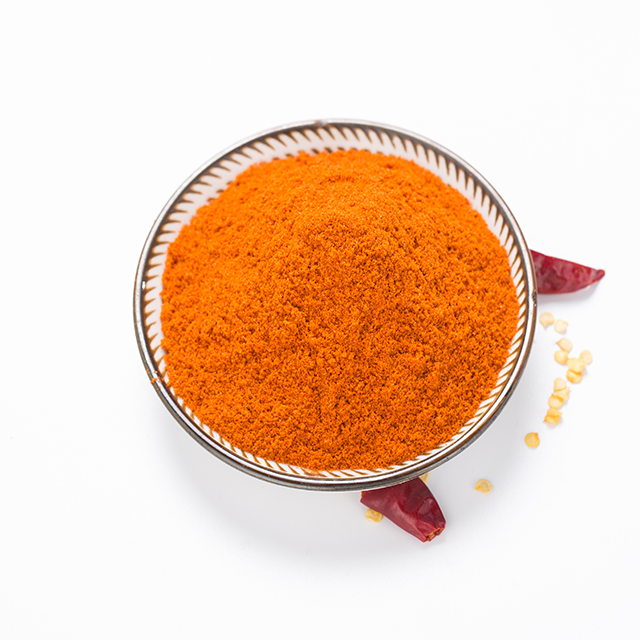
pauda chili-70,000-80,000SHU
70,000-80,000SHUKaulana ʻia kēia pauka chili no kona ʻano maikaʻi, maʻemaʻe a ʻaʻohe mea hoʻohui. Haʻaheo mākou i ka hāʻawi ʻana i kahi huahana i ʻoi aku ma mua o nā kūlana, loaʻa ka hoʻomaikaʻi ʻana ma o nā hoʻoili nui ʻana i ʻAmelika Hui Pū ʻIa, ʻEulopa, a me nā lāhui ʻē aʻe. E koho i kā mākou pauka chili no ka ʻike meaʻai maikaʻi, ʻike ʻia e ka ʻono ʻokoʻa a me ka kūpaʻa i ka maikaʻi i hoʻokumu iā mākou ma ke ʻano he mea hoʻolako hilinaʻi i nā mākeke honua.
-
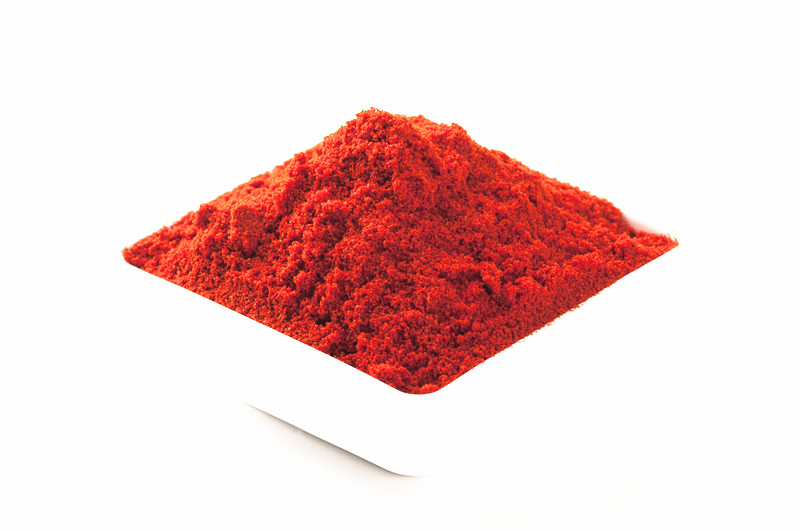
pauda chili-50,000SHU-60,000SHU
50,000-60,000SHUKe kū nei kēia pauka chili ma ke ʻano he koho maikaʻi loa - maʻemaʻe, hoʻohui ʻole, a me ka gluten-free. Hoʻokumu ʻia mai nā pepa chili maikaʻi loa, hōʻoia kā mākou huahana i kahi ʻike mea ʻala maoli. Hoʻokuʻu ʻia mai nā mea hoʻohui a me ka gluten, hāʻawi ia i kahi paʻi kūlohelohe a maikaʻi i kāu hana culinary. E koho i kā mākou pauka chili no ka ʻono maʻemaʻe a me kahi huakaʻi ʻai meaʻai olakino!
What Is The Trick To A Good Chili?
Chili, a beloved spice used worldwide, is a versatile ingredient that adds depth, flavor, and heat to any dish. Known for its rich, spicy kick, chili peppers come in various forms, including fresh, dried, powdered, and as chili sauce or oil. Whether you're an adventurous cook or someone who enjoys adding a touch of heat to your meals, chili products offer the perfect solution.
Fresh Chili Peppers are vibrant, juicy, and packed with heat. From mild to extremely spicy varieties, fresh chilies can be sliced, diced, or used whole to infuse dishes with their pungent aroma. Great for stir-fries, salsas, and curries, fresh chilies add a fresh and bold flavor to your meals.
Dried Chili Peppers are perfect for slow-cooking and flavor extraction. When dried, chilies intensify their heat and smokiness. You can use them whole, ground into chili powder, or rehydrate them to create sauces and soups with a complex depth of flavor.
Chili Powder is a staple in kitchens around the world. A blend of dried chili peppers and other spices like cumin and garlic, chili powder adds a punch of heat and a savory aroma to dishes. Perfect for seasoning meats, soups, stews, and even grilled vegetables, chili powder offers convenience without compromising on flavor.
Chili Sauces and Oils are excellent for those who prefer a ready-to-use option. These products combine chili with ingredients like garlic, vinegar, or sesame oil to create flavorful sauces and oils that elevate your dishes instantly. Whether you like it sweet, tangy, or fiery, chili sauces and oils are perfect for dipping, marinating, or adding to your favorite foods.
Enhance your culinary creations with chili a bold, flavorful ingredient that brings spice and excitement to every meal!
Why Are Peppers Called Chili?
The term "chili" is often used to refer to various types of hot peppers, but its origin and usage are a bit more complex. Here’s why peppers are called "chili":
1.Etymology from Nahuatl (Aztec language):
The word "chili" comes from the Nahuatl language, which was spoken by the Aztecs and other indigenous peoples in Mesoamerica. In Nahuatl, the word for pepper is "ch? lli". The Aztecs and other native groups in Central and South America cultivated and used chili peppers long before Europeans arrived, and they were integral to their cuisine.
When Spanish explorers encountered these peppers in the Americas in the 15th and 16th centuries, they adopted the Nahuatl word "ch? lli" to describe them. The term eventually made its way into other languages, including English, where it became commonly used.
2. Naming Confusion and Global Spread:
The word "chili" is used differently around the world. In many places, "chili" refers to the fruit of the Capsicum plant, which can be used fresh, dried, or powdered to add heat to food. However, when used in the context of chili con carne (the famous spicy stew), the name "chili" specifically refers to the dish made with ground meat, chilies, beans, tomatoes, and spices.
In the U.S. and many English-speaking countries, the term "chili" has become synonymous with hot peppers, especially Capsicum annuum, which includes common varieties like jalapenos, serranos, and cayennes. However, in other parts of the world, like India and some parts of Asia, the term "chili" often refers to the spicier varieties of Capsicum that are commonly used in their cuisines.
3. "Chili" vs. "Chili Pepper":
In the 17th century, when Christopher Columbus brought the peppers back to Europe, they were initially thought to be a type of pepper (which they resemble in taste and appearance). The name “pepper” had already been used to describe the spicy fruit of the Piper nigrum plant (black pepper), and this led to the widespread use of the term "pepper" for the Capsicum family, despite them being botanically unrelated. Over time, the term "chili pepper" was adopted in many languages to differentiate the spicy peppers from black pepper.
In this sense, "chili" became shorthand for chili pepper, the pepper that imparts heat, especially from the Capsicum family, which includes many varieties of peppers that vary in heat intensity.
4. Cultural Influence and Usage:
The spread of chili peppers around the world, particularly after the Columbian Exchange (which was the exchange of plants, animals, and cultures between the Americas and the Old World), played a significant role in shaping global cuisine. As chili peppers became more commonly used in a wide range of dishes, the name “chili” was often applied to dishes and recipes that incorporated these peppers, such as chili con carne, chili oil, and chili sauce.
In summary, "chili" is derived from the Nahuatl word for pepper, "ch? lli", and has evolved in usage due to its widespread adoption in cuisines around the world. It’s used to refer to both the pepper itself and the dishes made with it, particularly those that are spicy and contain peppers.








